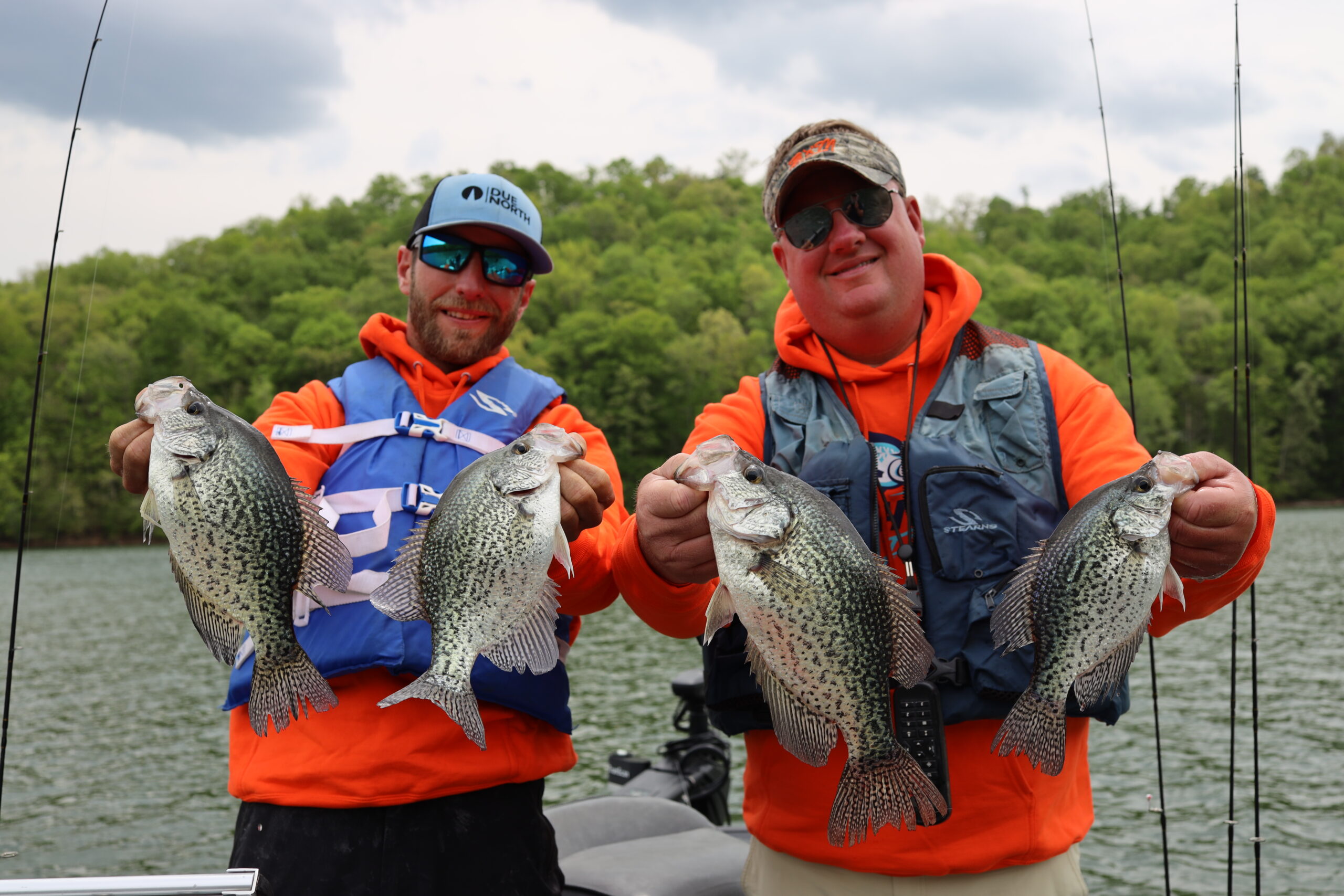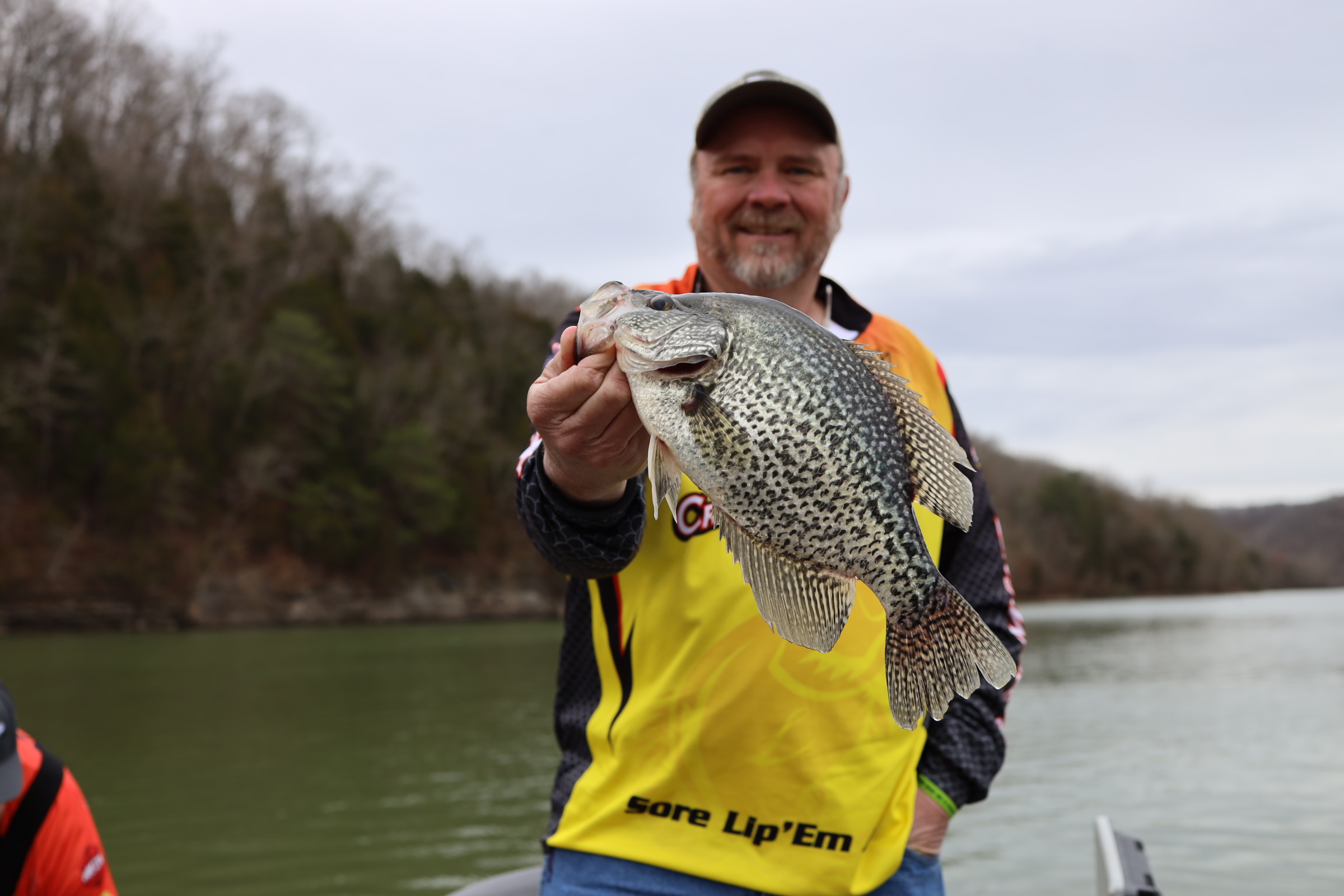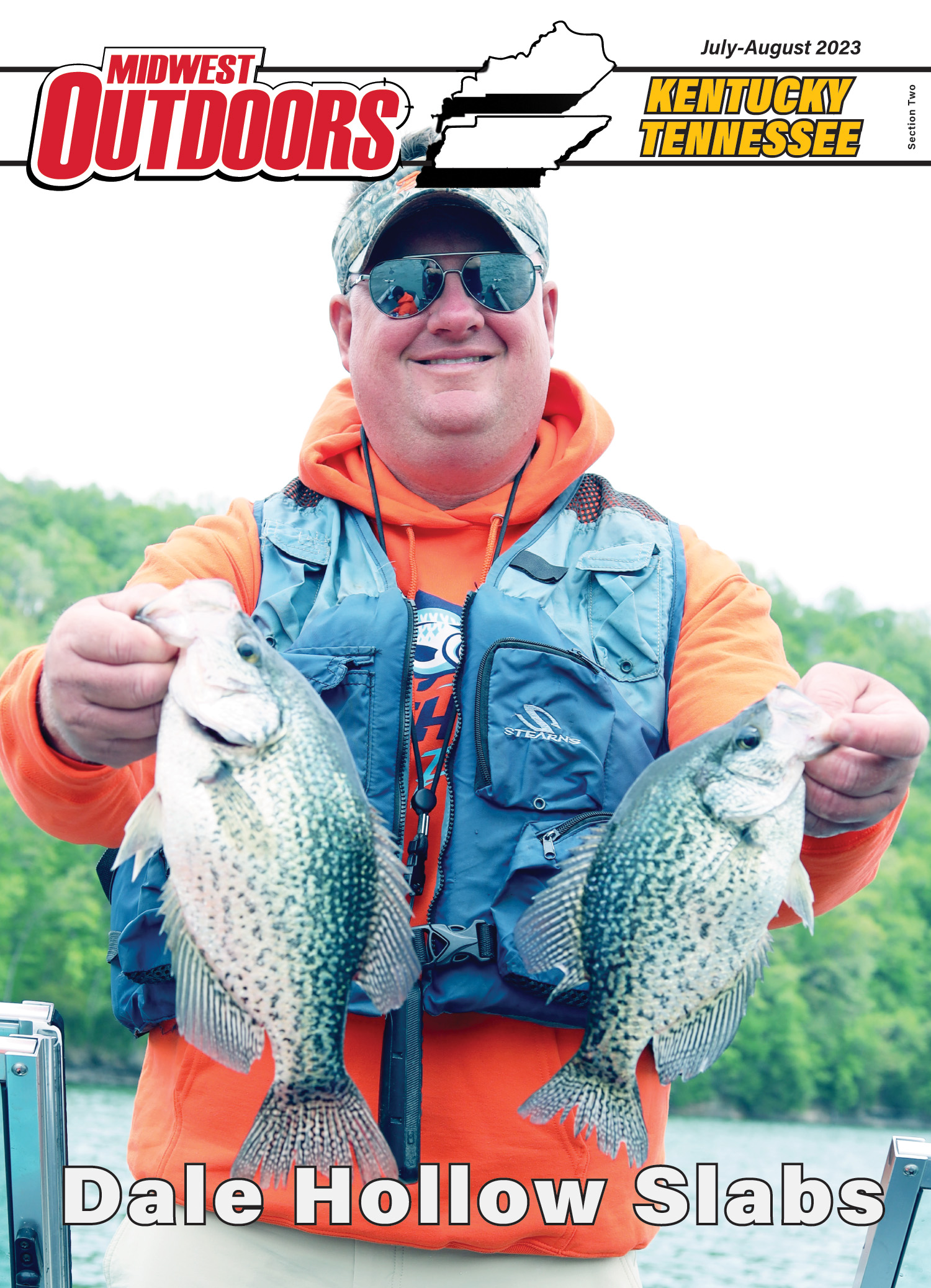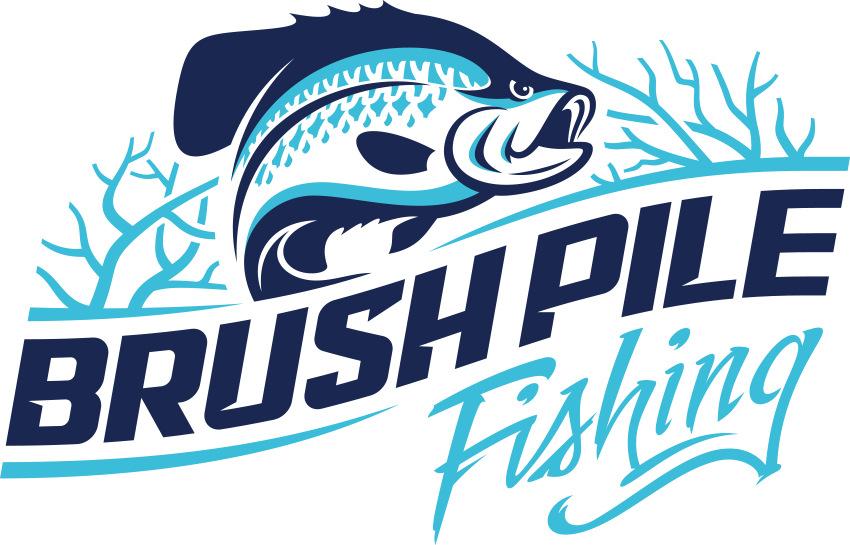Your cart is currently empty!
Find the Grass for Dale Hollow Crappie
Dale Hollow is fast becoming known as a big crappie destination. My good friend Denny at Dale Hollow Marina will attest to that as his marina has started buzzing now all year long with crappie anglers from all over the country looking for big slab crappie. One of the most asked questions I get when I’m at Dale Hollow is where did you find those big crappie? Followed by, we went all over the lake and can’t catch a fish as we plopped another nice’un onto the cleaning table.
I must confess that when I fish Dale Hollow Lake, I have plenty of insider info to help me out. As an outdoor writer you sometimes hang with some of the best crappie anglers on earth and if inclined to do so, you can learn a lot from them. Since I’m an angler first and a writer second, I pay attention when I’m on the boat with anglers like Kent Driscoll, Corey Thomas, or David Jones. These guys know how to catch crappie and they fish Dale Hollow more often than me.
It seems like you learn the most when the crappie is biting the least. When the crappie is biting good you just go with what’s working and have fun. When the crappie isn’t biting the thinking caps must be donned and work be done to catch a few crappie, especially good ones. This has happened on a couple occasions during our Brushpile Media Camps out of Dale Hollow Marina and I’ve used it to my advantage to learn more about the lake and how to fish it. Rest assured there were still plenty of big crappie caught, even under tough conditions but these guys know their stuff and the reactions from anglers walking by the cleaning station is proof of that.

This past spring at our media camp the conditions were less than ideal. Some fish were staging while others had already spawned and had the post-spawn funk. The banter at the marina called for the usual tactics for spring crappie before heading out. It was soon evident after the morning group returned for lunch that the “usual” tactics were not going to work. You could tell that the excitement had turned to seriousness as the pro’s discussed other options for finding and catching more crappie than they had that morning. We at least needed enough for the traditional Brushpile Fishing fish fry to wrap up media camp. Without the fish fry no one would have any of Mr. Ron Wong’s hush puppies and that would be tragic. Those hush puppies deserve an article all their own.
The common theme in the more serious conversations at the dock was grass. Find some grass and you might get a fish or two to bite, seemed to be the consensus. So, that’s what we did. Luckily, I was in the boat with Corey Thomas, the premier crappie guide on Dale Hollow Lake and Due North Elite Guide Service owner Mitch Metcalf down from Pennsylvania to see what Dale Hollow is all about. Corey knew where some grass might be. It was spring and this year had been a slow warming one and the grass that was tall enough to hold fish was scattered. A clump here and a clump there.
I asked Corey what he looked for as far as areas and depth and when looking for grass on Dale Hollow and whether the crappie stayed in it throughout the summer. By fishing when the grass was just beginning to show up in the back of bays, a lot of knowledge was gained about where to look for grass. “You can find long points on a map and look for grass there. This seems to be the best place to find crappie in the grass on Dale Hollow.” Corey said. “Anywhere there is shallow water surrounded by deep water nearby will concentrate the crappie in that area and if there is grass then all the better.”
Corey also noted that the best time to fish the grass on Dale Hollow Lake is in the spring and in the winter when the grass is short. “It’s not that the crappie isn’t in the grass, because they are there year-round, it’s just because it’s so hard to fish the grass when it’s tall and filled out. When the grass is short you can swim a Li’L TUFFY Swimbait or a small jig like the Crappie Magnet’s Pop-Eye jig over the top of the grass. The crappie will come up out of the grass to get it. When the grass fills out, the crappie tend to bury up in it and it’s hard to work a bait through it. Also, during the post spawn period the crappie will be very skittish. This is when the small Pop-Eye jig really shines.”
Corey finished up by telling me that in the summer you can find deep grass where it is still fishable. There is enough water above the grass to work a bait. “This grass is harder to find, but you can sometimes find the edge where the grass begins to not get enough sunlight and it will be shorter in length and in deep water. This edge could be a goldmine for mondo crappie.” Corey said. “The problem is that oftentimes the crappie will be buried in the taller grass. Sometimes though they will come out and sit on that shorter deeper grass to ambush bait fish and when this happens it’s on and you can catch some good crappie.”

Me and Corey fished for several hours so there was a lot of grass fishing being discussed. One of the things that comes to mind is Corey talking about humps that tend to go unnoticed by most anglers. A hump is essentially the top of a hill that’s underwater. This hilltop sometimes referred to as an island, is shallow enough that it will support some grass on top. He told me these humps can be small but will sometimes be loaded with big crappie. You can find these humps with a good map or on your GPS unit and they are worth a look.
I fished with Kent Driscoll on the second day and the bite was tough. Kent is a crappie tournament angler and Prostaff manager for B’n’M fishing and he loves to fish a bobber rig. Kent is no slacker when it comes to crappie fishing. He had me up at daylight and even bypassed some great breakfast biscuits at Dale Hollow Marina so that we could get to fishing a couple hours earlier. We found some grass right away and there were some crappie in it, but they did not bite. They were some of the post-spawn crappie Corey mentioned the day before being a little skittish and reluctant to bite.
It didn’t take long for Kent to rig up a slip bobber to float his Pop-Eye jig over the grass. “Maybe if we leave it in the strike zone a little longer, they might hit it.” Kent said as he rigged his slip bobber on the B’n’M ultralight TCM rod and made his first cast to the grass. The crappie was still stingy with their bites, but the slip bobber paid off with a few fish that otherwise may have never seen the net.
We all learned a lot at media camp this year, especially about catching crappie in the grass. Be sure and take the time to study what is happening on the water and you will figure out how to catch more Dale Hollow slabs when you go. Each situation is unique and might not present itself very often. Anything you can learn from those situations will only add to your success on the water.

